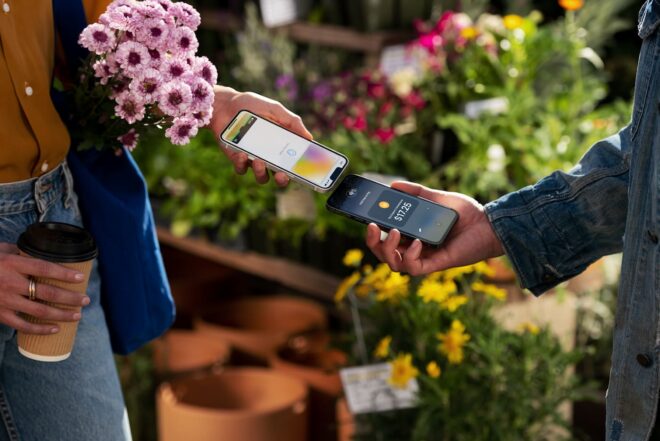What is POS (point of sale) software?
Editorial Team
5 min read
Point of sale (POS) software is the technology retailers, restaurants, and other businesses use to accept in-person payment. Whether installed on a cash register, PC, mobile device, or designated system, point of sale software allows merchants to quickly ring up items, calculate the total cost of the purchase, and securely process payment.
Why your business needs POS system software
Many merchants often use point of sale software exclusively to accept payments made by card, check, and even cash. However, modern-day POS systems are capable of so much more than payment processing. With the right setup, you can use your point of sale software to run your entire operation.
Below are just some of the ways in which businesses can use POS system software to boost sales, cut costs, and automate many time-consuming tasks.
1. Order fulfillment
When stock is running low, your POS software can alert you to put in order refills with your suppliers. This simple task alone is a huge time saver – especially if your business experiences high turnover and frequent inventory depletions.
2. Employee scheduling
Tired of balancing multiple calendars as you try scheduling shifts for your team? Put this task on autopilot by using your POS system software to efficiently allocate shifts throughout the day, week, or month – using whatever rules and parameters you set.
3. Loyalty programs
Launch a loyalty program directly through your point of sale software. Create physical and digital rewards cards to keep your most loyal customers returning. You can also design gift cards that customers can share with friends and family.
Some loyalty programs integrate seamlessly with SMS, email, and postal mail – allowing you to send discounts and promotions using whatever forms of communication your customers prefer. Better still, you can create sales funnels, reminders, and delivery schedules – all executed automatically within your POS system software.
4. Reporting and analytics
Ever wonder what your best-selling items are, or when your busiest time of day is? Not sure what inventory to phase out, or whether you should extend your evening hours?
With built-in reporting and analytics, POS software helps eliminate any guesswork and enables you to generate instant snapshots of how your business is doing, complete with detailed insights into opportunities and challenges on the horizon. You can also create daily, weekly, monthly, and annual reports – whether you’re on a smart device or PC.
5. Third-party integration
Integrations with popular business tools – from sales software to customer relationship management suites to accounting platforms – remove the need to manually update your books every time a new sale is generated. Instead, all your record keeping goes on autopilot, allowing you to focus on other important aspects of running your business.
Thanks to some popular apps, you can further expand your point of sale software’s functionality with extra features, whether you want to:
- Automate floor plans for your restaurant
- Schedule happy hours for your busy bar
- Handle employee payroll for your team
- Manage online ordering for your pizzeria
POS system software: on-site versus cloud-based
Point of sale software isn’t new, but how it’s delivered is constantly evolving. Historically, the technology was hosted on-site using local servers. This method is sufficient for processing sales on location at your brick-and-mortar business. However, you will still need an IT team to set up your payment environment, and repairs and maintenance may be common when hosting the server and software on-site.
This is why a growing number of businesses are migrating toward cloud-based POS software solutions and pairing this technology with portable devices, such as smartphones and tablets. Some of the advantages of this approach include:
- Minimal setup, since you don’t have to configure any on-site servers to get up and running
- You always benefit from the latest software version since all updates are automatically “pushed” to your devices
- 24/7 access to your payment environment from any secure browser
- The ability to make sales anywhere – including for curbside pickup, and off-site deliveries
If you still prefer using desktop POS systems, no problem. As long as your business has an Internet or cellular data connection, your credit card terminal can still communicate with cloud-based point of sale software.
Choosing the right POS system software for your business
Many factors go into POS software selection. One of the most important factors is security. You should only explore solutions that are PCI-compliant. Ideally, your point of sale software should also leverage advanced fraud management technologies such as tokenization and encryption.
Thereafter, you should focus on functionality:
- What features do you need – including out-of-the-box and via third-party integration?
- Where will you interface with customers? Note that migration toward mobile POS terminals makes this decision less important.
- How scalable is the solution? You want POS software that can grow with your business. You might be a brick-and-mortar merchant today, but can your point of sale software handle online transactions if you decide to launch an eCommerce store tomorrow?
Finally, look at cost. More specifically, you should ask:
- Are the fees transparent (and negotiable)?
- Do you have to lease or buy your POS components?
- Are there contracts involved (and early termination fees)?
- Do you have to meet minimum transaction quotas to avoid penalties?
There are no right or wrong answers to these questions. The decision to move forward with any POS software ultimately depends on whether the benefits outweigh the upfront and ongoing costs of using that particular solution.
If you’re only using your POS software to handle payments, you’re potentially missing out on time- and cost-saving opportunities. This is true whether you run a startup or a multinational corporation.
To discover how our point of sale software solutions can help streamline your operations, reduce waste, and increase profits, request a free demo with our merchant services team today.
Related Posts
Tap to Pay on iPhone now available with the Clover Go app
8 value-added barber shop services to consider adding to your menu
Popular Topics
Stay In Touch
Sign up and learn more about Clover.
Thank you for your subscription!
Recent Stories
- Jewelry store supplies and equipment needed for opening day
- How small businesses can use employee discounts to retain staff
- Tips and tricks for opening an outdoor pop-up restaurant
Please share your contact information
to access our premium content.
Thank you for sharing your contact information.
Download Now





